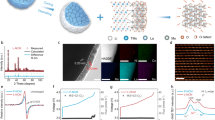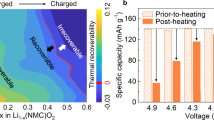Abstract
IT has been known for many years1–5 that when high current densities are drawn from vacuum tubes containing oxide-coated cathodes a green glow may be observed in the anode-cathode interspace. This discharge has been attributed to the presence of ionized barium and its occurrence has lent weight to the theory, now generally held, that the result of the process of activation of an oxide-coated cathode is to provide a stoichiometric excess of barium in the oxide lattice.
This is a preview of subscription content, access via your institution
Access options
Subscribe to this journal
Receive 51 print issues and online access
$199.00 per year
only $3.90 per issue
Buy this article
- Purchase on SpringerLink
- Instant access to full article PDF
Prices may be subject to local taxes which are calculated during checkout
Similar content being viewed by others
References
Detels, F., Jb. drahtl. Telegr. u. Teleph., 30, 10 (1927).
Gehrts, A., Z. tech. Phys., 11, 246 (1930).
Debiesse, J., and Champeix, R., C.R. Acad. Sci., Paris, 226, 1517; 227, 1349 (1948).
Jacob, L., Proc. Phys. Soc., 70, B, 235 (1957).
Higginson, G. S., Brit. J. App. Phys., 9, 106 (1958).
Author information
Authors and Affiliations
Rights and permissions
About this article
Cite this article
MEE, C. Spectral Analysis of Light emitted from an Oxide-coated Cathode during Thermionic Emission. Nature 193, 1066 (1962). https://doi.org/10.1038/1931066a0
Issue date:
DOI: https://doi.org/10.1038/1931066a0



